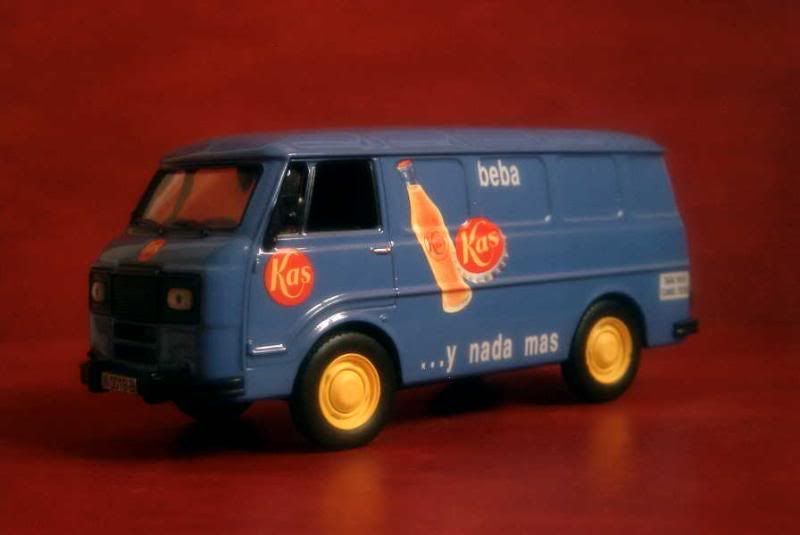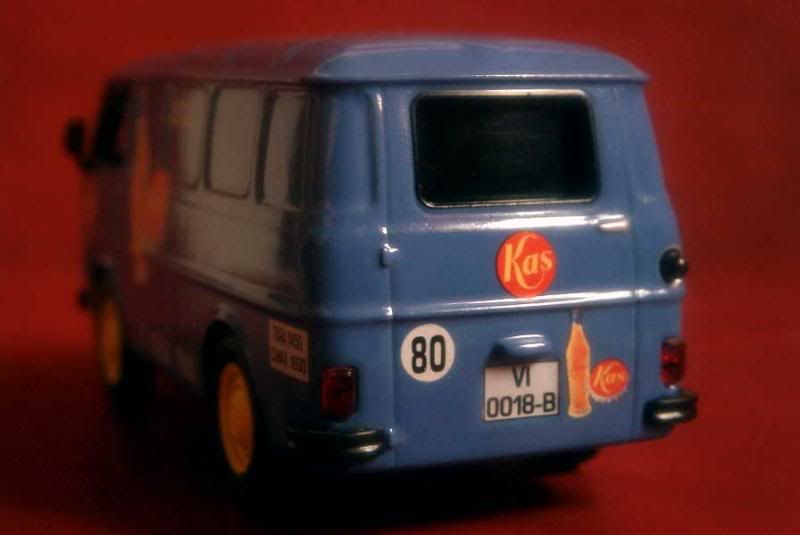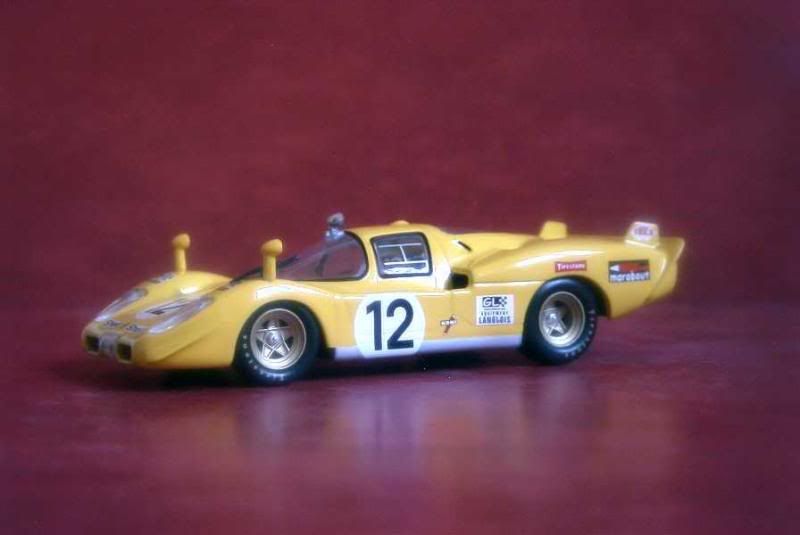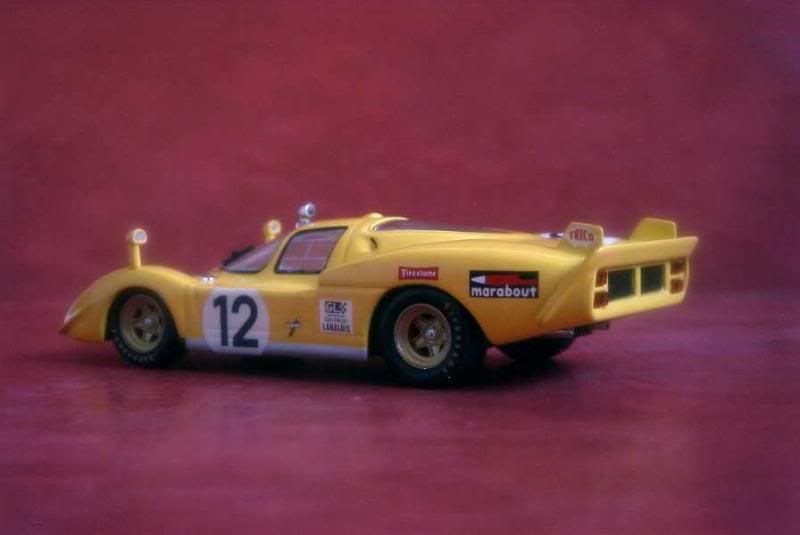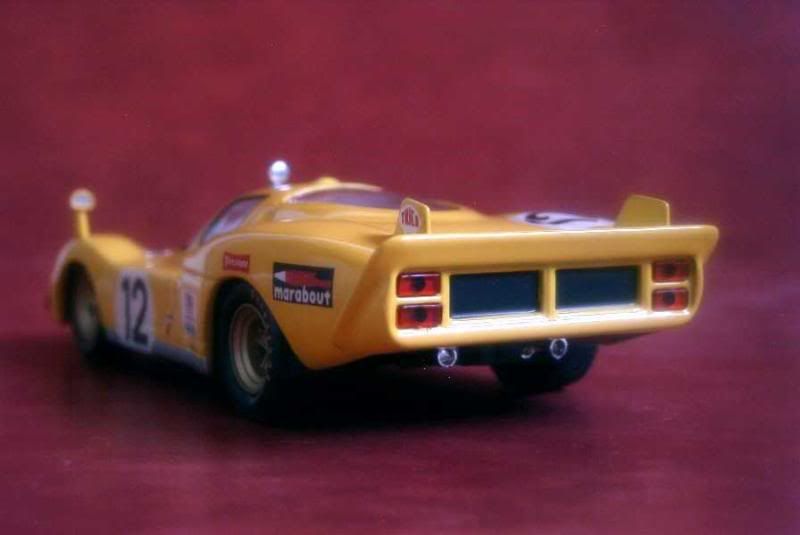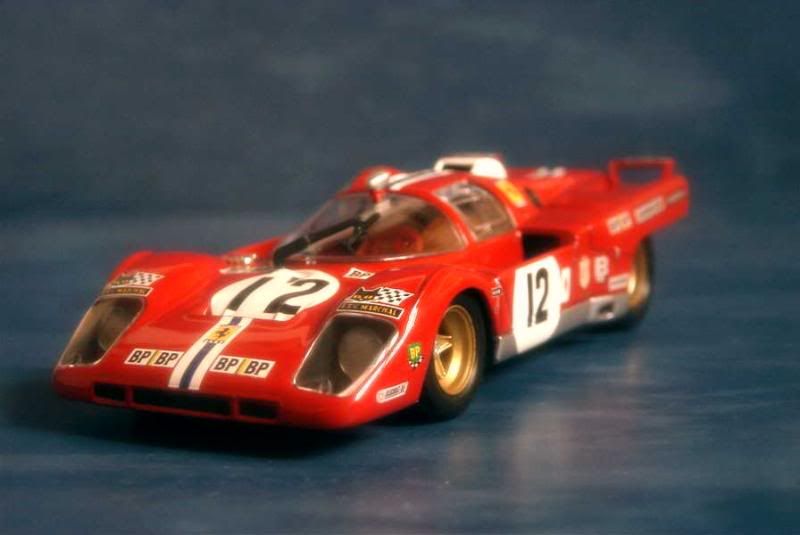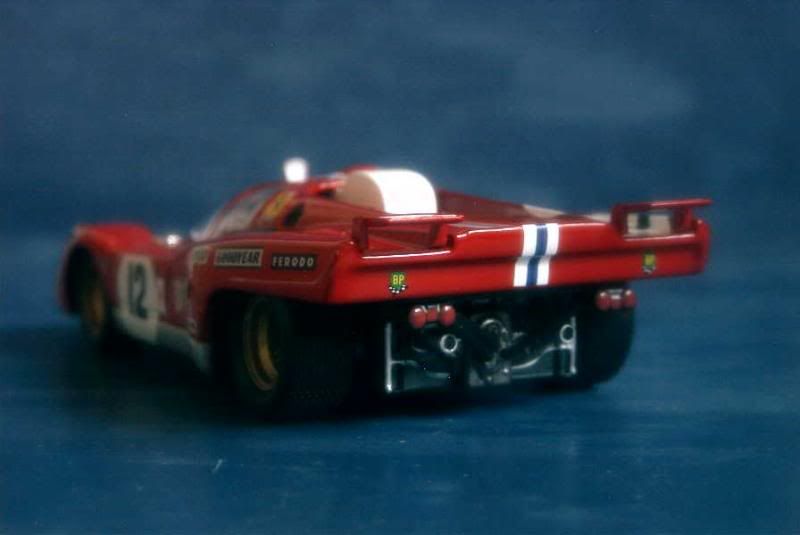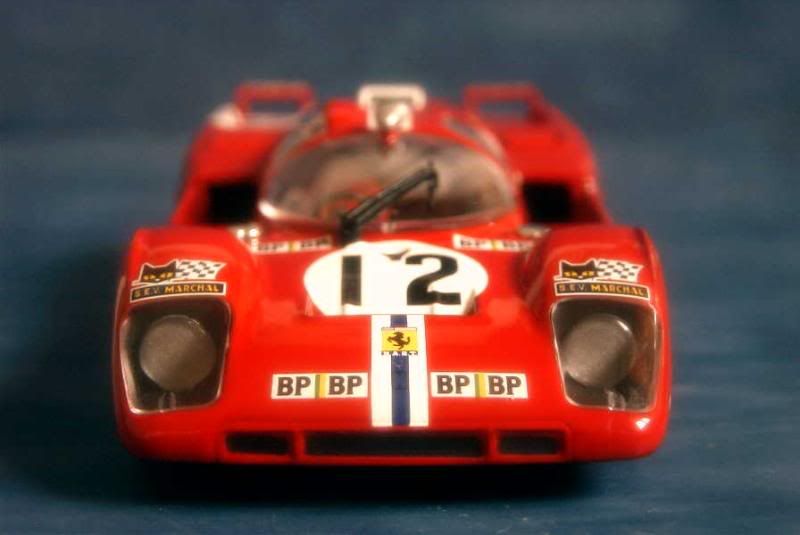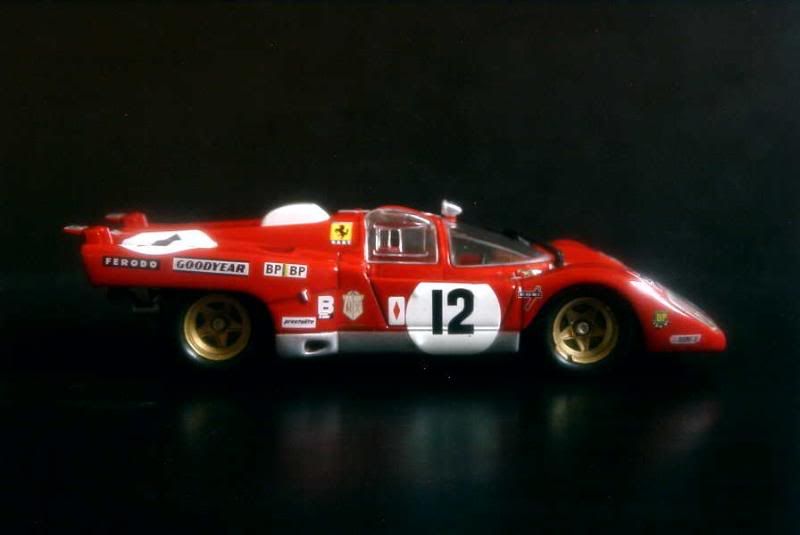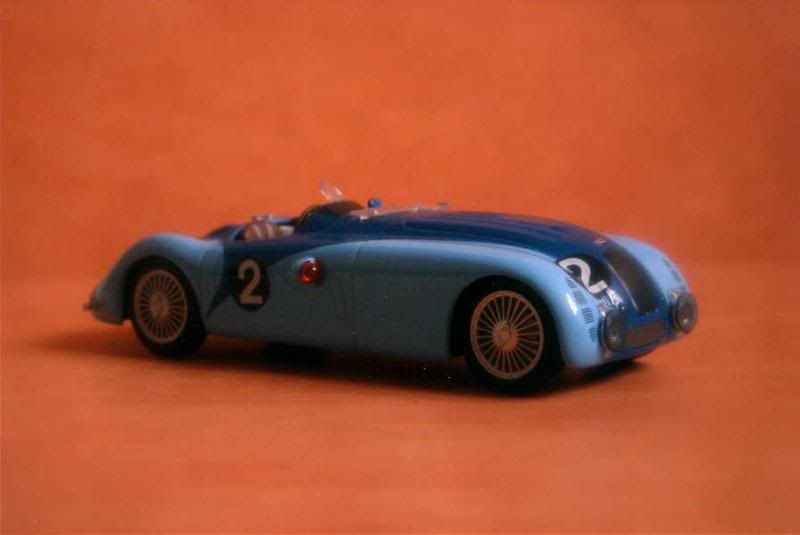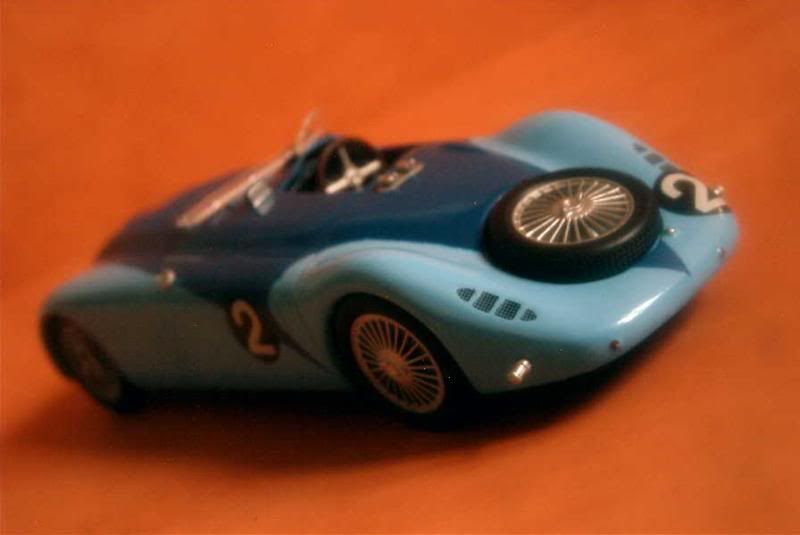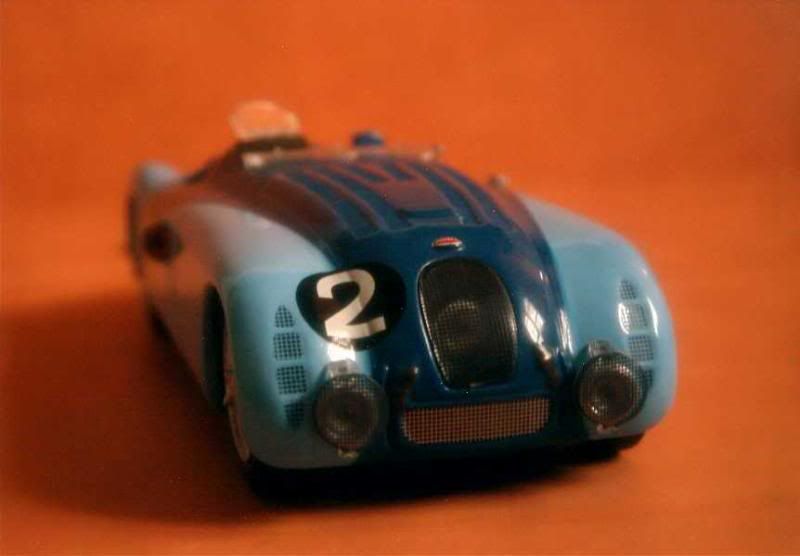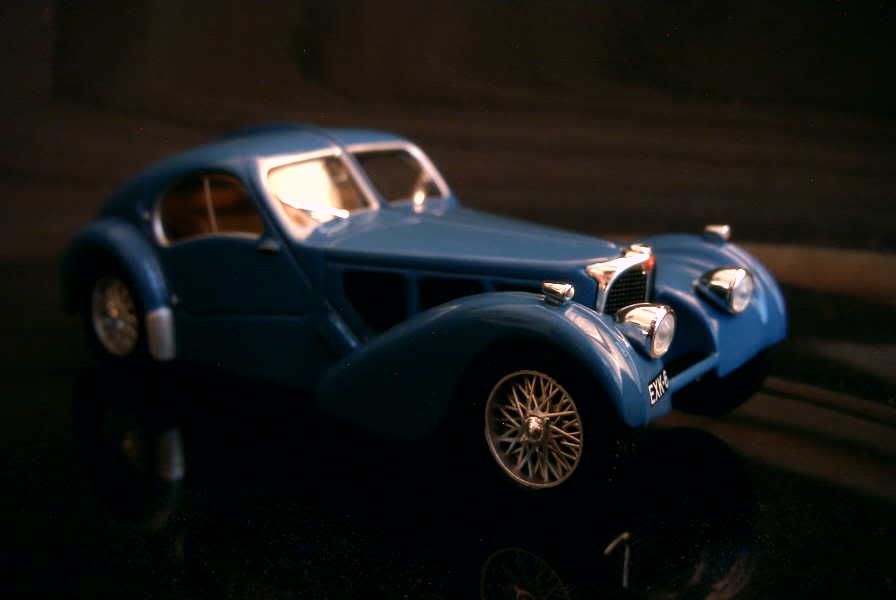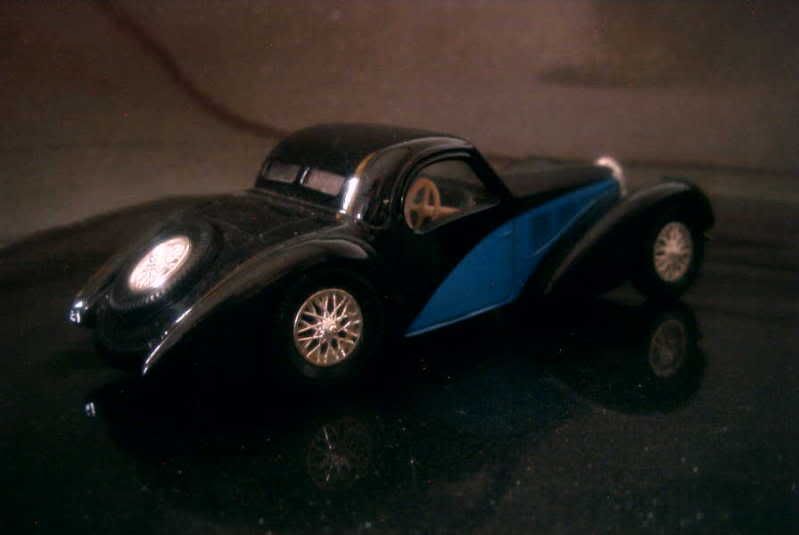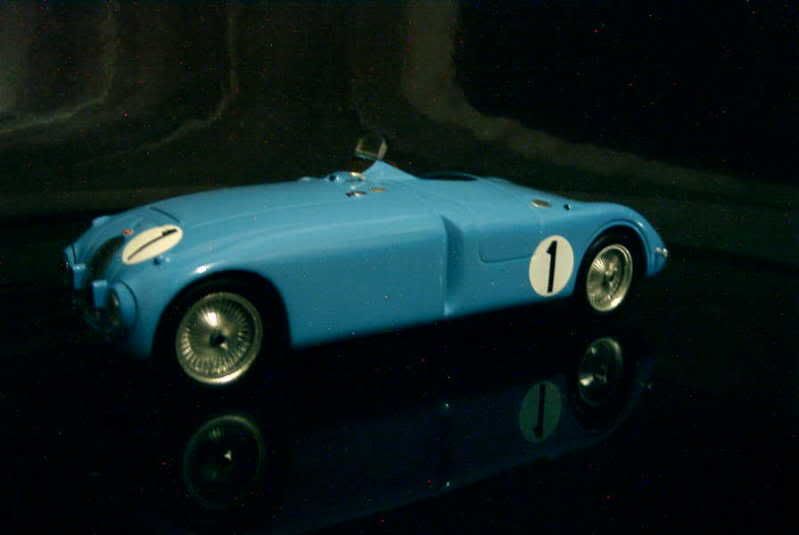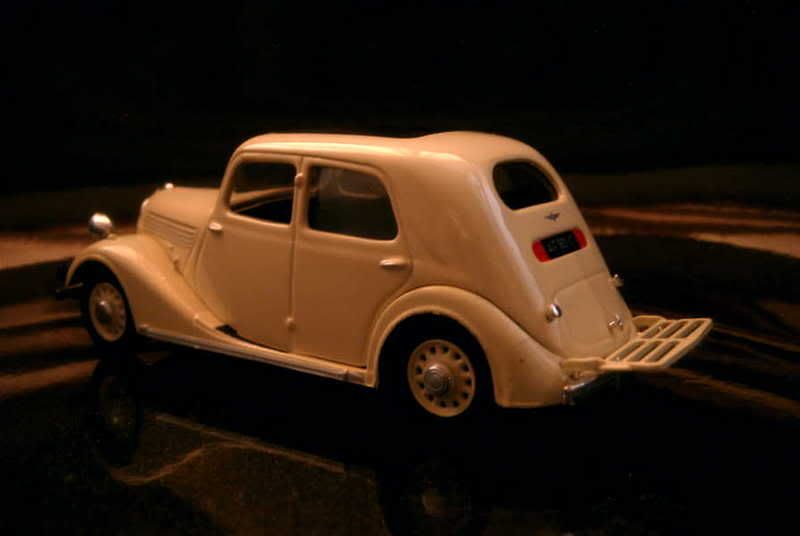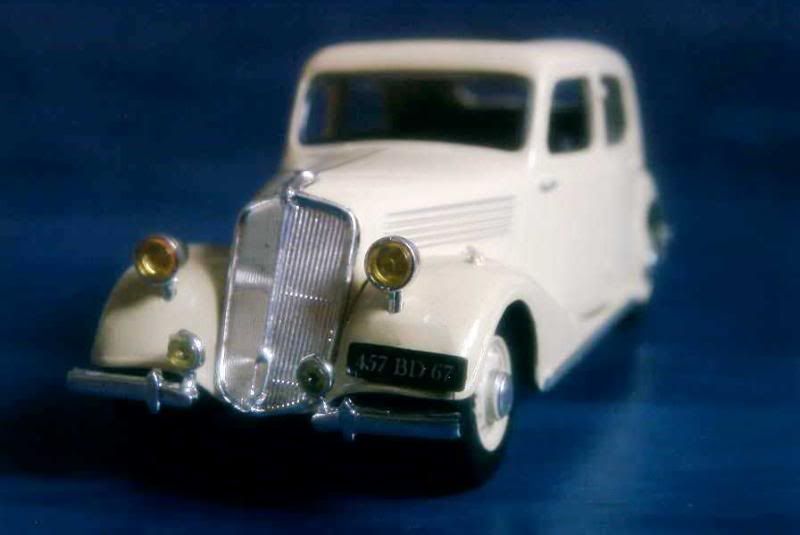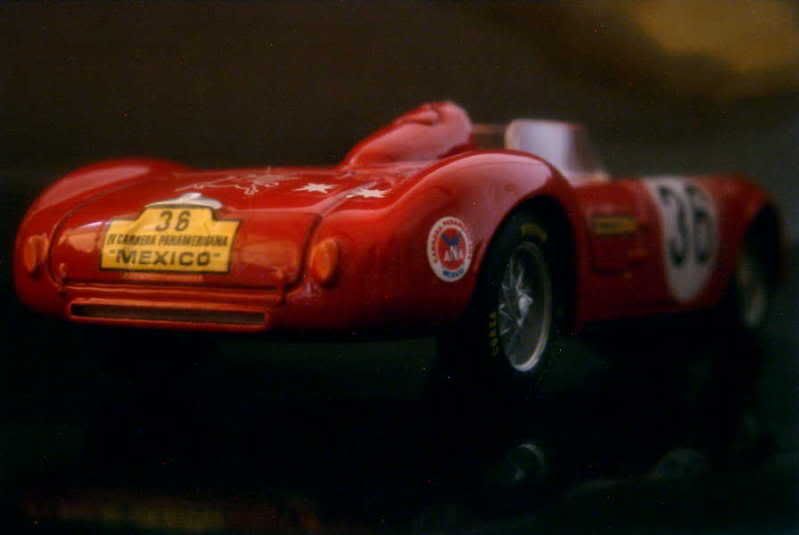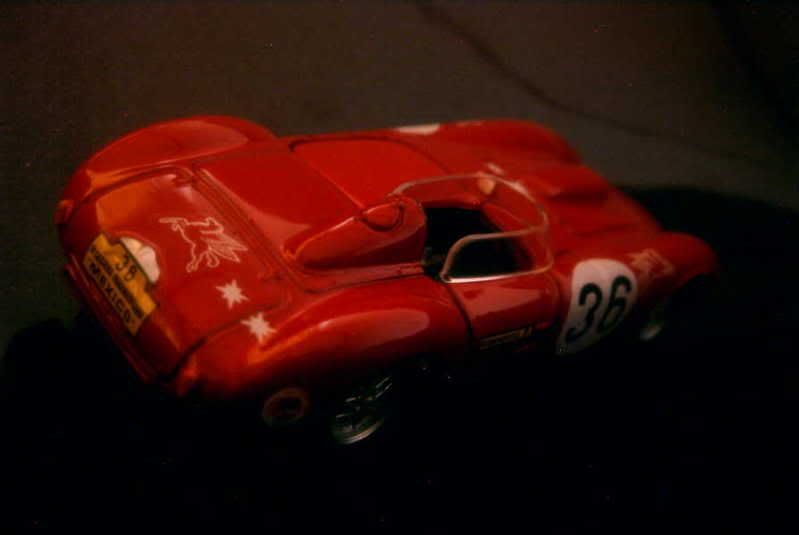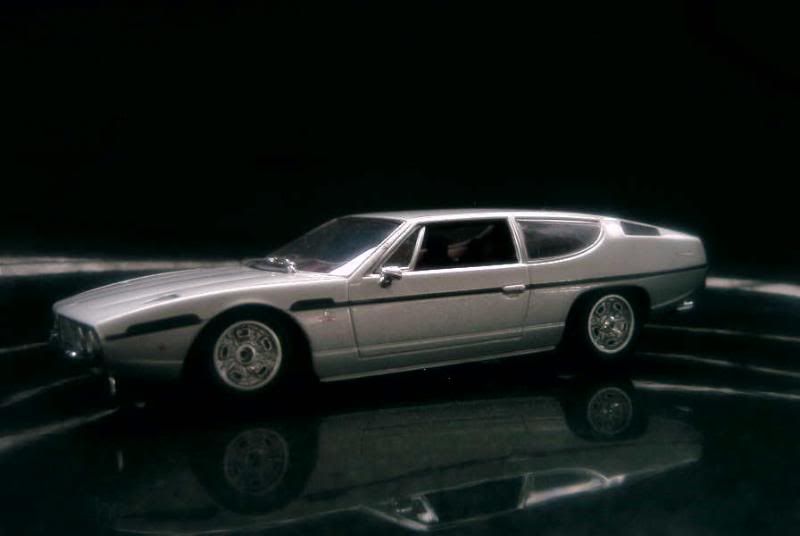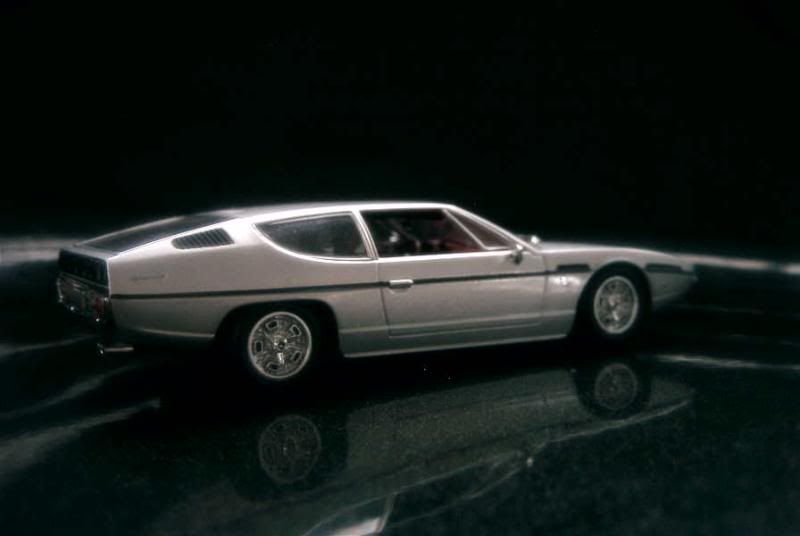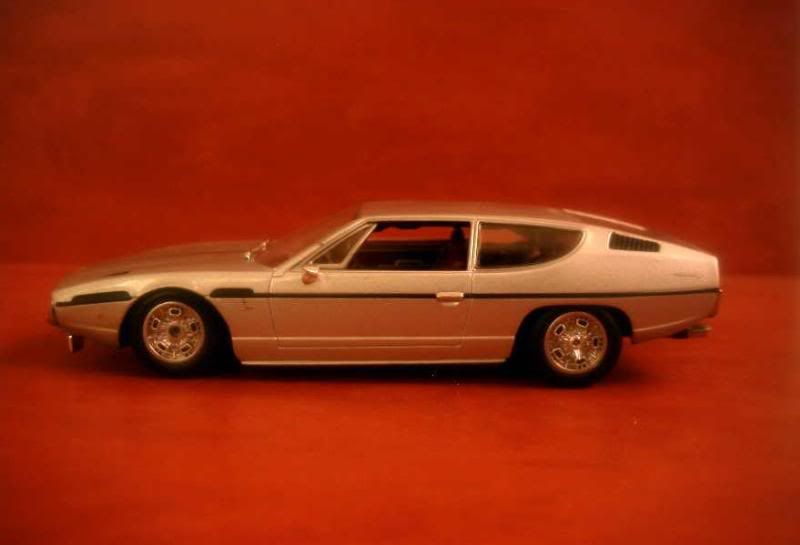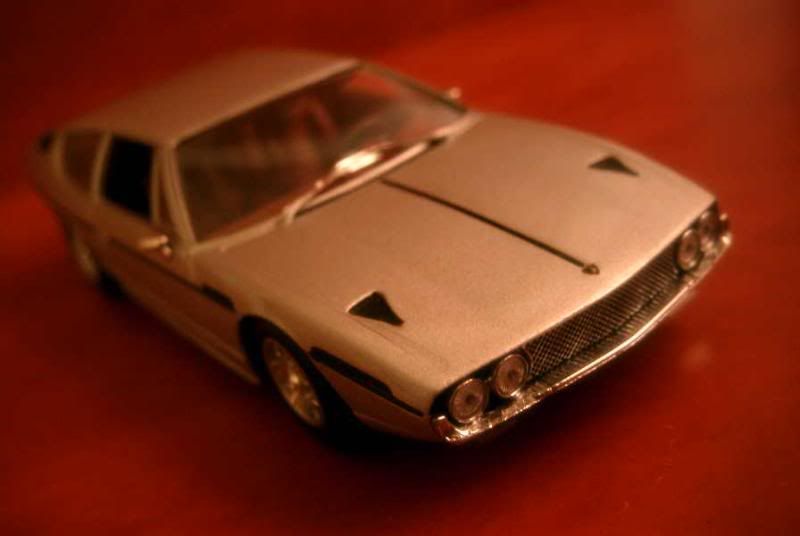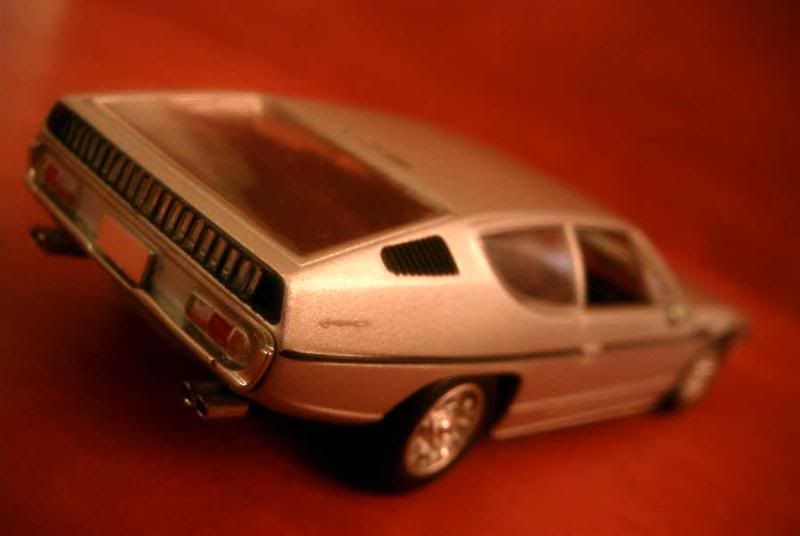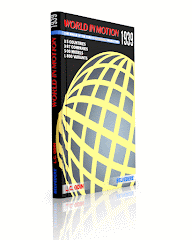A little history
Back to the basics! After exclusively building mid-engined sportscars for almost a quarter of a century, Ferrari returned to the classic front-engine/rear-wheel-drive layout in 1996. The car was the 550 Maranello, a strict two-seater despite its large size, that had been elegantly styled by Pininfarina. Ferrari’s goal was to cater for customers wanting more comfort than the F355 could offer, without sacrificing performance. Taken from the 456 model, a 5.5-litre DOHC V12 would see to that: 485 hp could bring the heavy 550 Maranello (though extensive use of aluminium tried to keep the weight down) to a 323 kph top speed, while accelerating from 0 to 100 could be achieved in no more than 4.5 seconds. Though racing duties were in theory reserved to the nimbler F355, some private teams soon had their eyes on the Maranello, which was developed into two main GT racing versions: the GT in 1999, and the GTS two years later. Both were designed by independent engineering companies without Ferrari’s support.
On the other hand, Ferrari introduced a convertible version of the 550, the limited-production Barchetta. First seen in October 2000 during the Mondial de l’Automobile in Paris, the exclusive Barchetta was designed for classy high-speed cruising on a sunny day – better keep the magnificent automobile in its stable if rain showers were forecasted, as its fabric top wasn’t designed to withstand highway speeds... even legal ones.
In 2002, Ferrari felt it was time to update its car. Various improvements were made, notably the fitting of a bigger 5.7-litre, 515 hp engine. A semi-automatic gearbox derived from the transmission used in Formula One was also made optional. Following this displacement increase, the car was logically renamed 575M Maranello (the “M” standing for modificata). In 2005, the previous 550 Barchetta found a successor in the 575M Superamerica, noted for its original retractable glass roof, a world first which eliminated the somewhat ludicrous soft top of the otherwise fantastic Barchetta.
Taking note of the laurels the 550 had gleaned in motor racing, Ferrari decided this time that the 575M would be developed into a competition version, but the resulting model, the 575 GTC, proved a disappointment.
The 575M was produced until the end of the 2006 model year, when it was succeeded by the brand-new 6.0-litre 599 GTB Fiorano, introduced a few months before during the Geneva motor show.
About the models
Model: Ferrari 550 Barchetta
Year: 2000
Maker: Ixo
Scale: 1/43
Distributed by: Fabbri as no.24 of its Ferrari Collection press series
Acquired: brand new, in May 2006, in Souillac, France
A good model - notice the gorgeous wheels - though it’s always a pity to see nice Ixo models being disfigured by painted mirrors in order to keep their prices down in press series guises. My rating: 13/20.
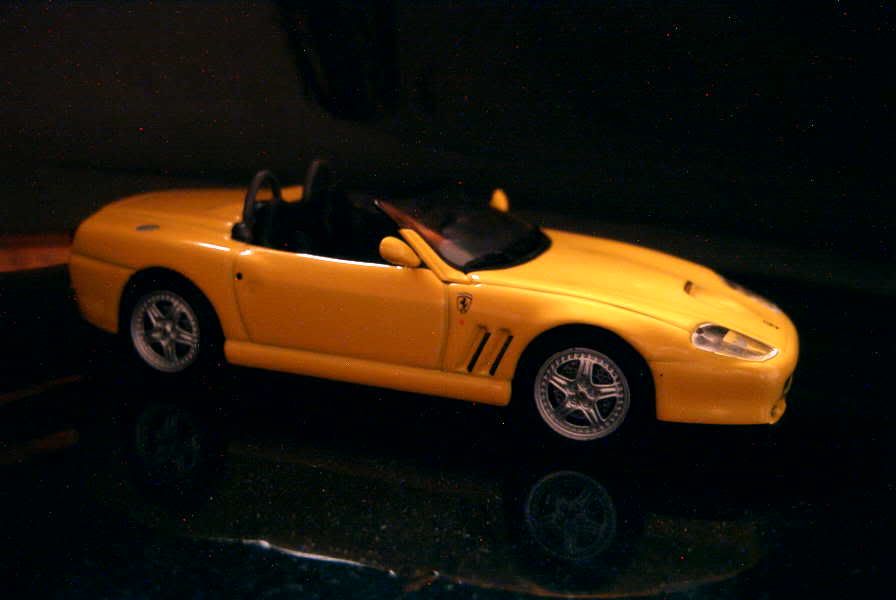
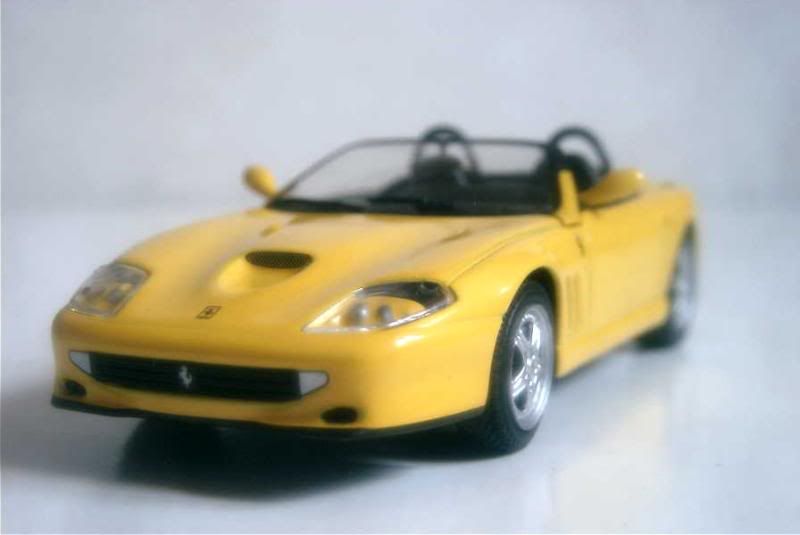
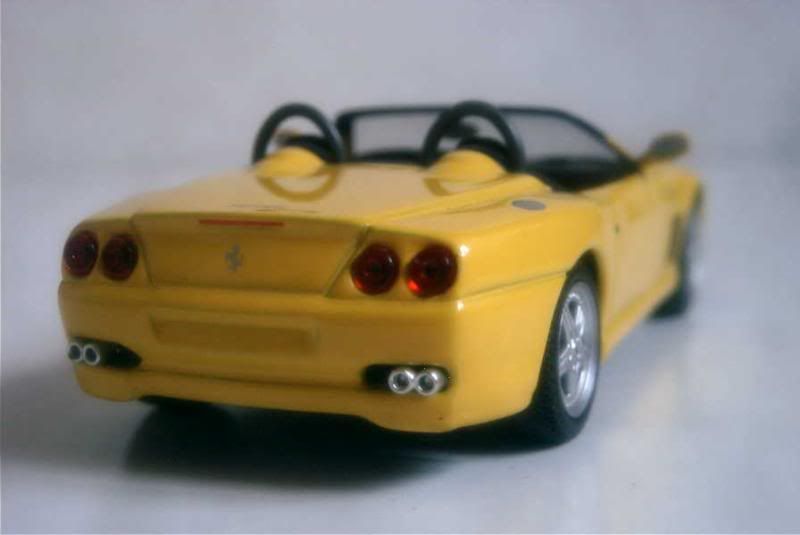
Model: Ferrari 575M Maranello
Year: 2002
Maker: Ixo
Scale: 1/43
Distributed by: Ixo “Ferrari” series, ref. FER003
Acquired: brand new, in May 2008, in Manila, Philippines
A few tasteful details added make all the difference between a genuine Ixo and a common Altaya. Superb is the word that comes to mind. I’ll give a well-deserved 15/20.
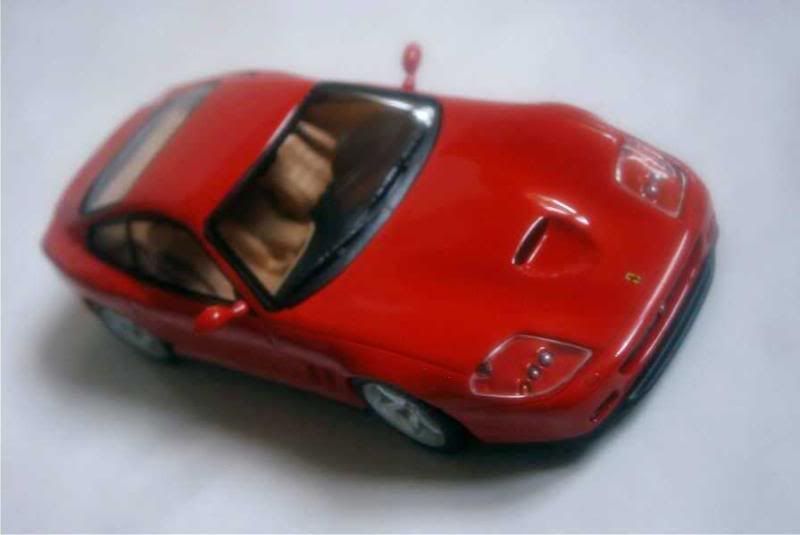
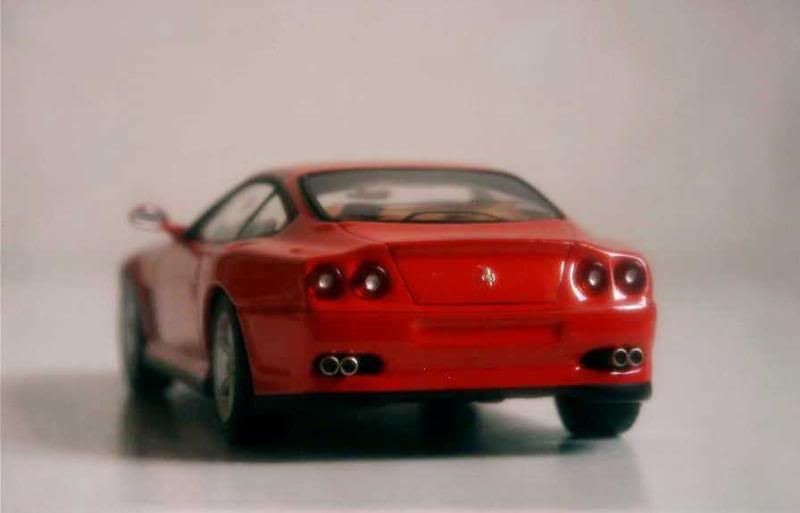
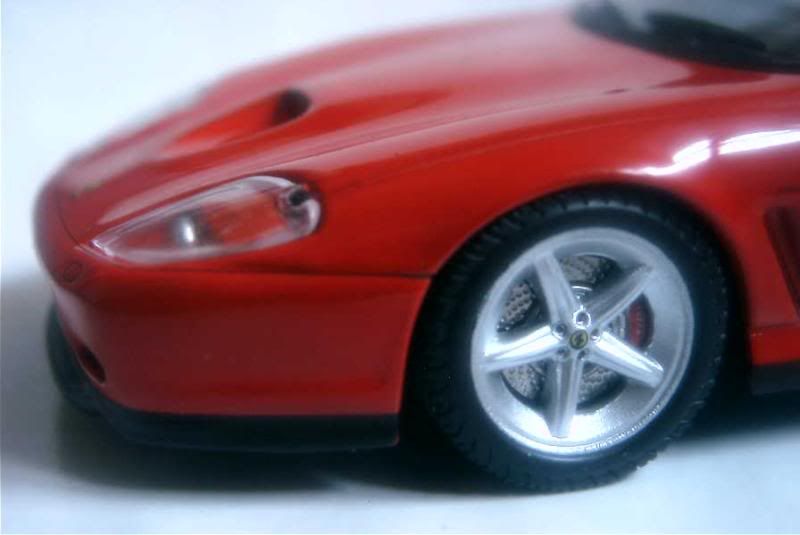
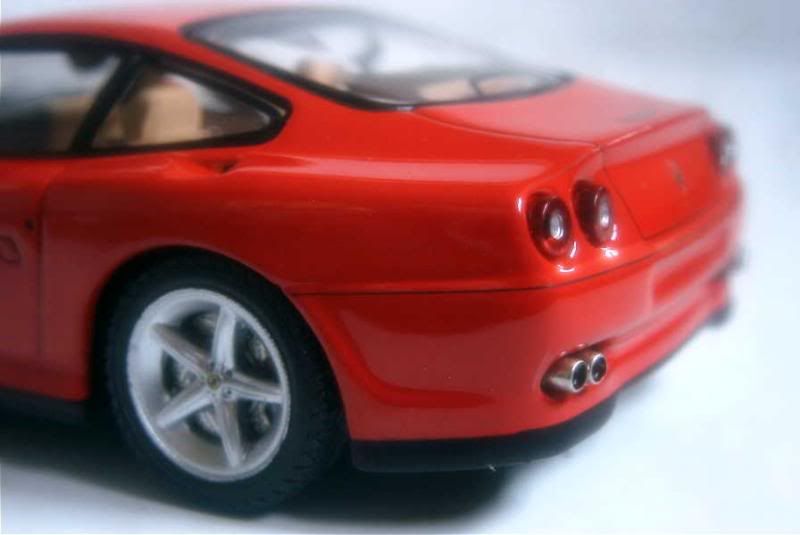
Model: Ferrari 575M Maranello
Year: 2002
Maker: Ixo
Scale: 1/43
Distributed by: Fabbri as no.4 of its Ferrari Collection press series
Acquired: brand new, in March 2005, in Souillac, France
Altaya’s version of the previous car comes in an elegant, if somewhat plain-looking, silver paint. It is also deprived of a few details, justifying a lower 13/20.
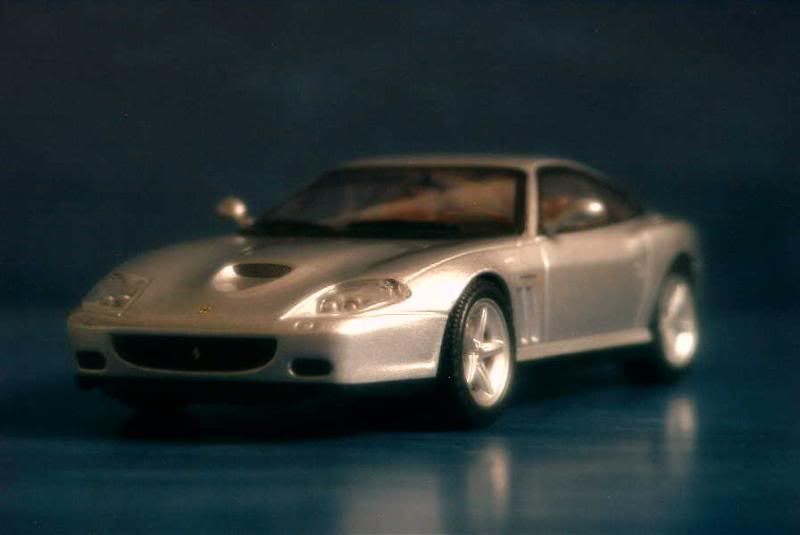
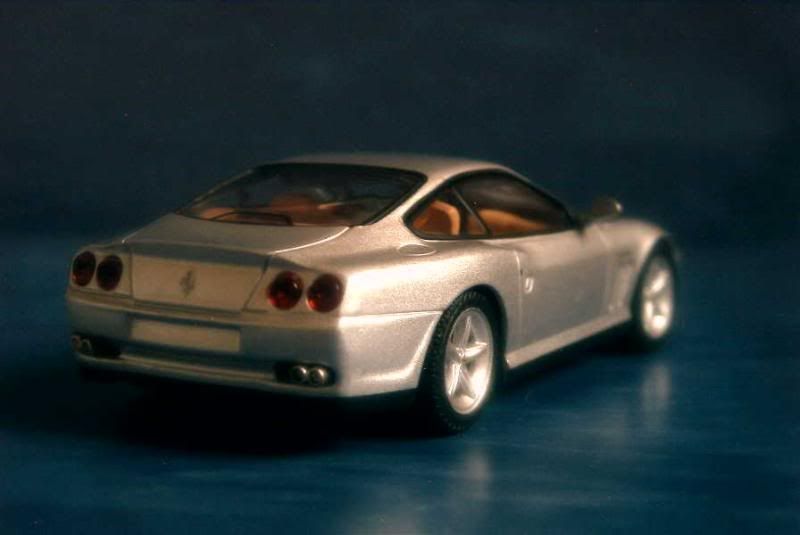
Model: Ferrari 575 GTC Maranello
Year: 2004
Event: 2004 Le Mans 24 Hours, driven by John Bosch, Danny Sullivan and Thomas Biagi (retired)
Maker: Ixo
Scale: 1/43
Distributed by: Altaya as no.61 of its Les Plus Belles Voitures des 24 Heures du Mans press series
Acquired: brand new, in May 2006, in Souillac, France
The detailing of models from this early collection was lower than it is in today's press series, but the busy decoration helps, to some extend, to hide this model's shortcomings: 13/20.
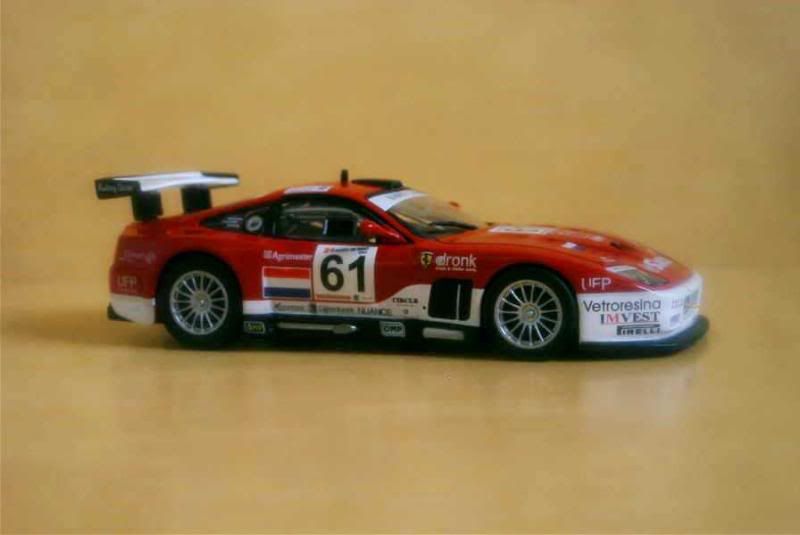
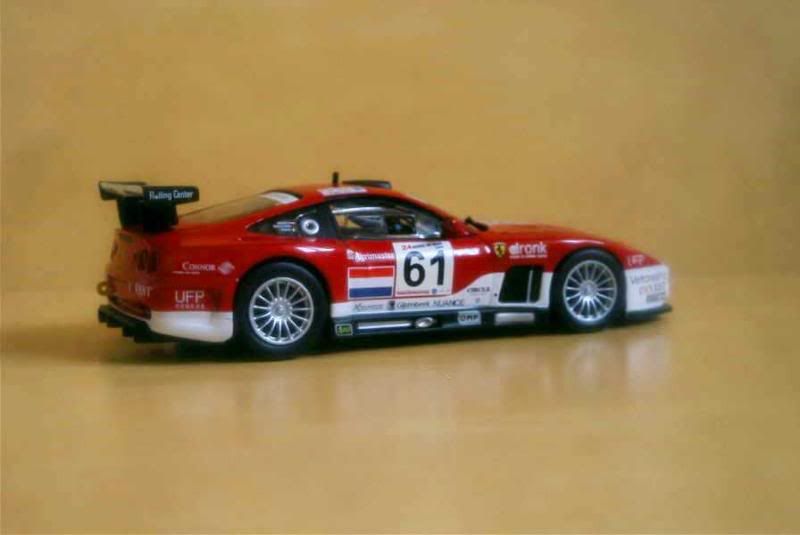
Model: Ferrari 550 GTS Maranello
Year: c.2001
Event: 2005 Le Mans 24 Hours, driven by Patrice Goueslard, Olivier Dupard and Vincent Vosse (finished 12th)
Maker: Ixo
Scale: 1/43
Distributed by: Altaya as no.6 of its Les Monstres Sacrés de l'Endurance press series
Acquired: brand new, in April 2007, in Souillac, France
That the factory-designed 575 GTC wasn’t the success it was expected to be is made plain by this 550, raced as late as 2005 by Larbre Compétition. Ixo did a good job for Altaya, which series offers better quality standards than it has been in the past. The rear spoiler looks much real for it is rather thin – take care, that also means fragile in case of clumsy handling. My rating is 15/20.
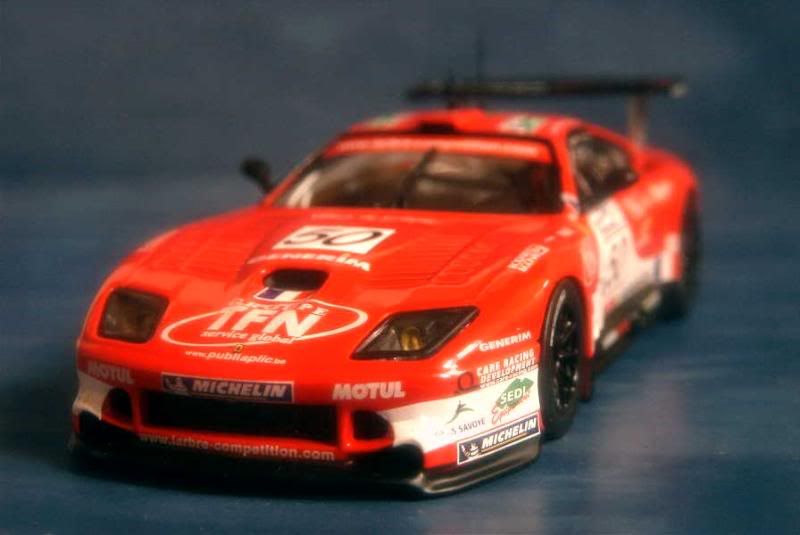

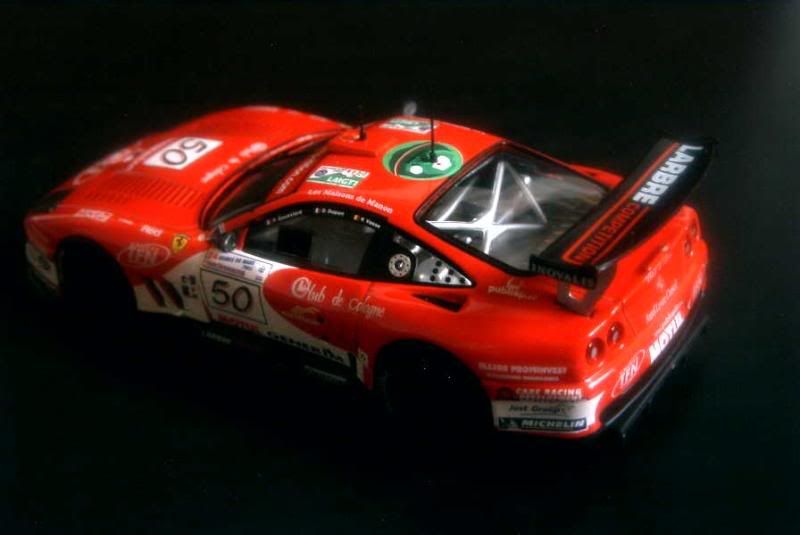
Back to the basics! After exclusively building mid-engined sportscars for almost a quarter of a century, Ferrari returned to the classic front-engine/rear-wheel-drive layout in 1996. The car was the 550 Maranello, a strict two-seater despite its large size, that had been elegantly styled by Pininfarina. Ferrari’s goal was to cater for customers wanting more comfort than the F355 could offer, without sacrificing performance. Taken from the 456 model, a 5.5-litre DOHC V12 would see to that: 485 hp could bring the heavy 550 Maranello (though extensive use of aluminium tried to keep the weight down) to a 323 kph top speed, while accelerating from 0 to 100 could be achieved in no more than 4.5 seconds. Though racing duties were in theory reserved to the nimbler F355, some private teams soon had their eyes on the Maranello, which was developed into two main GT racing versions: the GT in 1999, and the GTS two years later. Both were designed by independent engineering companies without Ferrari’s support.
On the other hand, Ferrari introduced a convertible version of the 550, the limited-production Barchetta. First seen in October 2000 during the Mondial de l’Automobile in Paris, the exclusive Barchetta was designed for classy high-speed cruising on a sunny day – better keep the magnificent automobile in its stable if rain showers were forecasted, as its fabric top wasn’t designed to withstand highway speeds... even legal ones.
In 2002, Ferrari felt it was time to update its car. Various improvements were made, notably the fitting of a bigger 5.7-litre, 515 hp engine. A semi-automatic gearbox derived from the transmission used in Formula One was also made optional. Following this displacement increase, the car was logically renamed 575M Maranello (the “M” standing for modificata). In 2005, the previous 550 Barchetta found a successor in the 575M Superamerica, noted for its original retractable glass roof, a world first which eliminated the somewhat ludicrous soft top of the otherwise fantastic Barchetta.
Taking note of the laurels the 550 had gleaned in motor racing, Ferrari decided this time that the 575M would be developed into a competition version, but the resulting model, the 575 GTC, proved a disappointment.
The 575M was produced until the end of the 2006 model year, when it was succeeded by the brand-new 6.0-litre 599 GTB Fiorano, introduced a few months before during the Geneva motor show.
About the models
Model: Ferrari 550 Barchetta
Year: 2000
Maker: Ixo
Scale: 1/43
Distributed by: Fabbri as no.24 of its Ferrari Collection press series
Acquired: brand new, in May 2006, in Souillac, France
A good model - notice the gorgeous wheels - though it’s always a pity to see nice Ixo models being disfigured by painted mirrors in order to keep their prices down in press series guises. My rating: 13/20.



Model: Ferrari 575M Maranello
Year: 2002
Maker: Ixo
Scale: 1/43
Distributed by: Ixo “Ferrari” series, ref. FER003
Acquired: brand new, in May 2008, in Manila, Philippines
A few tasteful details added make all the difference between a genuine Ixo and a common Altaya. Superb is the word that comes to mind. I’ll give a well-deserved 15/20.




Model: Ferrari 575M Maranello
Year: 2002
Maker: Ixo
Scale: 1/43
Distributed by: Fabbri as no.4 of its Ferrari Collection press series
Acquired: brand new, in March 2005, in Souillac, France
Altaya’s version of the previous car comes in an elegant, if somewhat plain-looking, silver paint. It is also deprived of a few details, justifying a lower 13/20.


Model: Ferrari 575 GTC Maranello
Year: 2004
Event: 2004 Le Mans 24 Hours, driven by John Bosch, Danny Sullivan and Thomas Biagi (retired)
Maker: Ixo
Scale: 1/43
Distributed by: Altaya as no.61 of its Les Plus Belles Voitures des 24 Heures du Mans press series
Acquired: brand new, in May 2006, in Souillac, France
The detailing of models from this early collection was lower than it is in today's press series, but the busy decoration helps, to some extend, to hide this model's shortcomings: 13/20.


Model: Ferrari 550 GTS Maranello
Year: c.2001
Event: 2005 Le Mans 24 Hours, driven by Patrice Goueslard, Olivier Dupard and Vincent Vosse (finished 12th)
Maker: Ixo
Scale: 1/43
Distributed by: Altaya as no.6 of its Les Monstres Sacrés de l'Endurance press series
Acquired: brand new, in April 2007, in Souillac, France
That the factory-designed 575 GTC wasn’t the success it was expected to be is made plain by this 550, raced as late as 2005 by Larbre Compétition. Ixo did a good job for Altaya, which series offers better quality standards than it has been in the past. The rear spoiler looks much real for it is rather thin – take care, that also means fragile in case of clumsy handling. My rating is 15/20.



